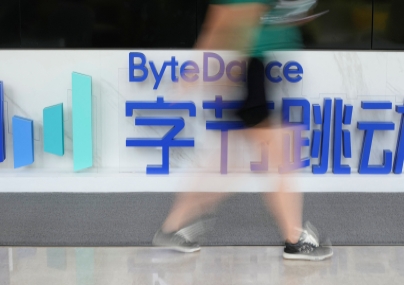
China is restructuring its economy, shifting its focus from labor intense manufacturing to put more emphasis on innovative and hi-tech sectors. Key among these new areas is the healthcare industry.
“The all-round moderately prosperous society could not be achieved without people’s all-round health,” Chinese President Xi Jinping said during the large National Health Conference 2016 in August as he called for more effort to “promote healthy lifestyles, strengthen health services, improve health protection, build a healthy environment and develop health-related industries.” The conference was the most important national meeting on health in two decades.
Two months later, in October, the State Council announced that it had set a goal of growing the worth of country’s healthcare industries to 8 trillion yuan by 2020 and to double that again to 16 trillion yuan by 2030. In 2013, China spent almost 4 trillion yuan on health care, according to the Economist Intelligence Unit.
Healthcare related industries have evolved enormously over the last decade. China is now home to global and innovative drug development companies like Sinopharm, Sinovac, Fosun Pharma and 3SBio. Medical device companies like Mindray and Microport have grown rapidly. Luye Pharma, a drug developer, is also investing in hospitals around Asia. Other companies are building huge networks of clinics and hospitals across the country. Technology companies are expanding electronic health networks.
Back to topEVOLVING REGULATIONS
At the same time, China’s regulatory framework has evolved almost constantly over the past decade as part of an effort to create an environment that fosters both innovation and more sustainable long-term growth.
“We can observe two approaches being taken from the regulatory changes, encouragement and supervision at the same time,” says Zhou Lei, a partner at Global Law Office.
Fast-approval channels for drug and devices as well as a new Marketing Authorisation Holder (MAH) scheme are two telling examples of policies that aim to foster a growth-friendly sphere.
Zhu Min, a partner at Han Kun Law Offices, says the the government is encouraging local innovation and med tech is a priority area of these efforts.
“The cur rent regulator y environment is more favorable for local device makers. The government is encouraging local innovation and med tech is a main focus,” said Zhu.
In June last year, the pilot Marketing Authorization Holder (MAH) program launched in 10 Chinese cities or provinces including Beijing, Tianjin, Hebei, Shanghai, Jiangsu, Zhejiang Fujian, Shandong, Guangdong and Sichuan.
Under this new framework issued by the State Council, domestic drug manufacturers, R&D institutions and individual researchers of Chinese nationality can obtain regulatory approvals to commercialize pharmaceuticals and outsource the manufacturing to contract manufacturing organizations (CMOs). In effect, this separates the drug manufacturing licensing regime from the marketing authorization.
“The MAH system has been adopted for many years in developed countries. This is definitely good news, also a big one for us,” says Samantha Du, chairman and CEO of start-up biotech company Zai Labs Ltd. “Scientists do not need to sell their research findings to pharmaceutical companies too early. This could largely encourage the development of innovative drugs.”
The regulations and matching incentives are aimed at innovative medical device manufacturers as well. In November, the China Food and Drug Administration announced another fast approval channel that creates an expedited registration route for new products with clinical applications that address currently unmet healthcare issues in the Chinese market.
“China is making progress in its stated aim of introducing a more internationally aligned and patient-centered regulatory system. In particular, manufacturers of innovative products will benefit from a series of measures to speed up the introduction of new medical technologies onto the Chinese medical device market,” noted a recent report by BMI Research.
Back to topHIGHER STANDARDS, LOWER SALES
The flip side of the coin is that to pave the way for the country to become a healthcare powerhouse, authorities are also pushing for and enforcing higher standards that closely align with international practices.
“The two-invoice system, anti-trust campaign, clinical trial data self-checking, quality and efficacy evaluation for generic drugs, new amendments in advertising law about drug and medical devices, as well as changes in anti-commercial bribery rules are all important steps to strengthen the regulation of healthcare related business,” adds Zhou from Global Law Office.
In April 2016, the State Council sent out the “Notice of the General Office of the State Council on Issuing the Major Tasks in 2016 in the Deepening of the Reform of the Medical and Health Care System” (SCS 2016, no.26), which requires public hospitals to implement a two-invoice system in central drug procurement operations. The aim of this two-invoice system is to more strictly define that only three parties are allowed as part of drug sales, from a drug manufacturer to a distributor then from a distributor to a hospital. The involvement of any other parties would incur at least one more tax invoice.
This approach, which led to a rapid destocking of inventory among distributors, resulted in a drop in sales and put pressure on the pharmaceutical industry, especially companies engaged in indirect sales that would have been the most impacted. Among these companies are Sihuan Parmaceutical, CSPC Pharmaceutical Group and Fosun Pharma.
Hong Kong-listed Sihuan, for example, noted in its 2016 interim report that “the aforementioned factors led to the Group’s first negative growth in history with revenue and profit decreasing by 21.8 percent and 49.3 percent year-on-year.”
Another hotly discussed regulatory change in China’s healthcare industry is an ongoing anti-monopoly campaign and recent moves by the National Development and Reform Commission (NDRC).
Chinese regulators fined global medical device manufacturer Medtronic PLC (NYSE: MDT) $17.20 million for setting fixed resale prices through monopoly agreements with its dealers. The NDRC issued a statement on December 7 stating that since 2014, Medtronic (Shanghai) Management Co. has displayed typical vertical monopoly behavior in the supply of advanced cardiovascular, restorative therapy and diabetes-related medical devices.
It was the first price-fixing case involving a medical device maker that Chinese anti-monopoly regulators investigated.
The country launched a nationwide anti-trust probe this year, investigating companies both at home and abroad. In January, fines worth US$607,977 were issued to five domestic medical companies for fixing the prices of their medicines.
“Overall, regulations in healthcare sectors are much stricter. It might be short pain, but will upgrade the industry in long term,” says Zhu with Han Kun, who likens the push to “scraping the toxins off the bones”.
This storm of reforms in regards to regulations also results in increasing demand for legal services. Zhu says that compliance training and guidance reports are increasingly sought-after services.
For the time being, however, there is a shortage of lawyers that focus specifically on health care, Zhu says.
“It requires legal professionals to let themselves be immersed in those guidance, instructions and announcements that are issued almost every couple days and get the messages between the lines,” says Zhu. “Otherwise, you cannot even communicate with your clients. Once a manager of a pharmaceutical company came to me and said that he had to give a lecture to the previous lawyer, and explained some jargon.”
“It needs special expertise and takes time,” adds Zhu. “Along with the government’s highlights on healthcare and scientific innovations, healthcare related industries are an emerging practice area for legal professionals in China with a bright future.”
Back to top

